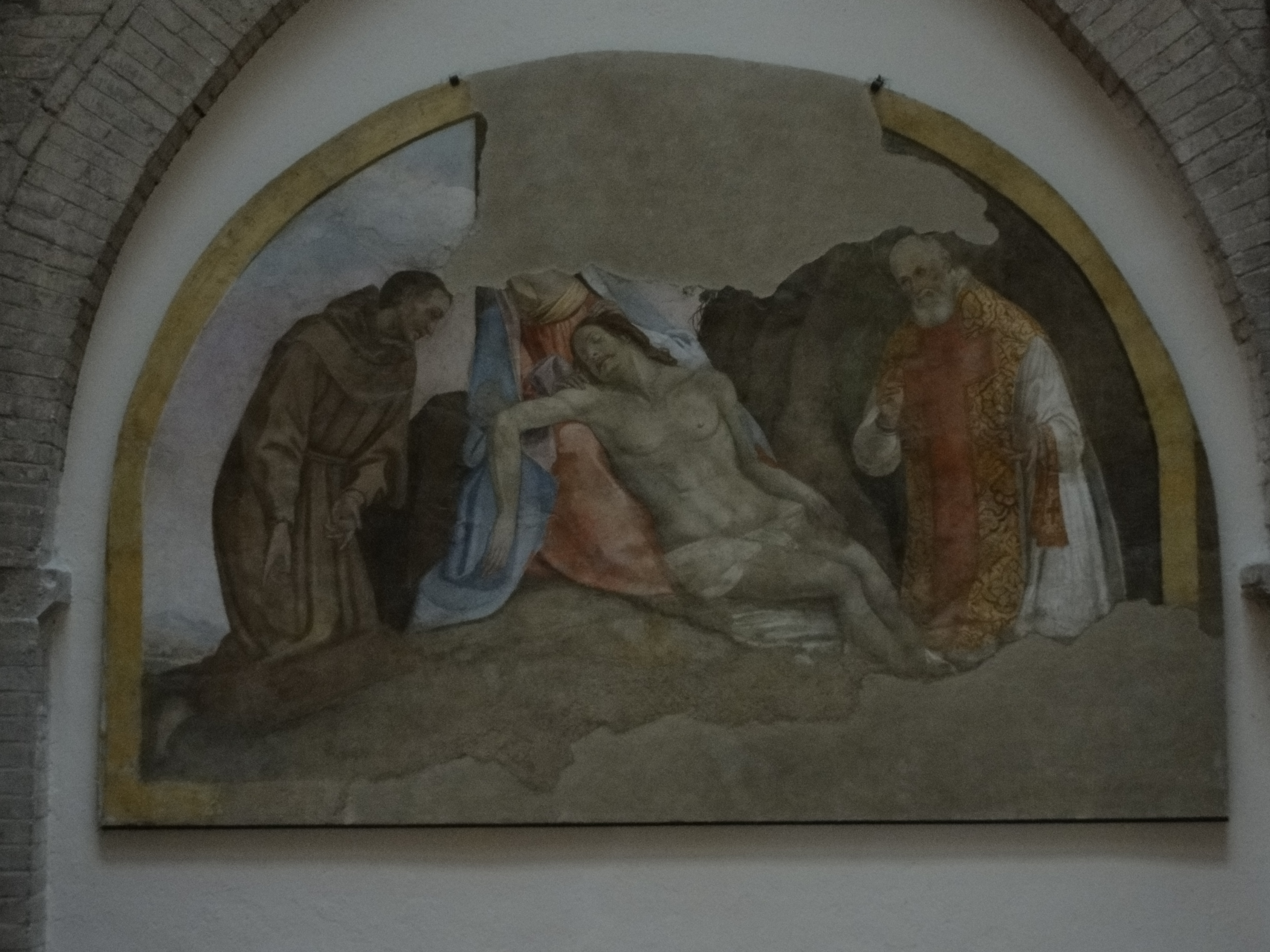Cesare Sermei on:
[Wikipedia]
[Google]
[Amazon]
 Cesare Sermei (
Cesare Sermei (
Città della Pieve
Città della Pieve is a ''comune'' (municipality) in the Province of Perugia in the Italian region Umbria, located in Valdichiana a few kilometres from the border between Umbria and Tuscany, and about southwest of Perugia and southeast of Chiusi ...
, c.1581 – Assisi
Assisi (, also , ; from la, Asisium) is a town and ''comune'' of Italy in the Province of Perugia in the Umbria region, on the western flank of Monte Subasio.
It is generally regarded as the birthplace of the Latin poet Propertius, born aroun ...
, 1668) was an Italian painter. Son of painter Fernando Sermei, he learned to paint in the workshop of Cesare Nebbia
Cesare Nebbia (c.1536–c.1614) was an Italian painter from Orvieto who painted in a Mannerism, Mannerist style.
Biography
Nebbia was born in Orvieto. He trained with Girolamo Muziano, and under this master, he helped complete a flurry of de ...
, primarily moving between Orvieto
Orvieto () is a city and ''comune'' in the Province of Terni, southwestern Umbria, Italy, situated on the flat summit of a large butte of volcanic tuff. The city rises dramatically above the almost-vertical faces of tuff cliffs that are compl ...
and Rome
, established_title = Founded
, established_date = 753 BC
, founder = King Romulus (legendary)
, image_map = Map of comune of Rome (metropolitan city of Capital Rome, region Lazio, Italy).svg
, map_caption ...
.
In 1608 Sermei established himself in Assisi and became a citizen of the city three years later. His career was long and he worked not only in Assisi but all over Umbria, including in the cities of Todi
Todi () is a town and ''comune'' (municipality) of the province of Perugia (region of Umbria) in central Italy. It is perched on a tall two-crested hill overlooking the east bank of the river Tiber, commanding distant views in every direction.
I ...
, Perugia
Perugia (, , ; lat, Perusia) is the capital city of Umbria in central Italy, crossed by the River Tiber, and of the province of Perugia.
The city is located about north of Rome and southeast of Florence. It covers a high hilltop and part o ...
, Bastia Umbra
Bastia Umbra () is a ''comune'' (municipality) in the Province of Perugia in the Italian region Umbria, located about 15 km southeast of Perugia. As of 31 December 2004, it had a population of 20,523 and an area of 27.6 km2.All demograph ...
, Foligno
Foligno (; Southern Umbrian: ''Fuligno'') is an ancient town of Italy in the province of Perugia in east central Umbria, on the Topino river where it leaves the Apennines and enters the wide plain of the Clitunno river system. It is located so ...
, and Terni
Terni ( , ; lat, Interamna (Nahars)) is a city in the southern portion of the region of Umbria in central Italy. It is near the border with Lazio. The city is the capital of the province of Terni, located in the plain of the Nera river. It is ...
. In Assisi his work can be found in the Basilica of Saint Francis (among other works by him in the Basilica a large fresco of the ''Universal Judgement'' in the apse of the Lower Church, the most demanding artistic work done in the Basilica during the 17th century), the Basilica of Saint Mary of the Angels, the Chiesa Nuova, the Bishop's Residence, and the church of Rivotorto
Rivotorto is a ''frazione'' of the ''comune'' of Assisi in the Province of Perugia, Umbria, central Italy. It stands at an elevation of 211 metres above sea level. At the time of the Istat census of 2001 it had 1284 inhabitants. The name comes fro ...
(which contains a series of 12 oil paintings from 1653 portraying the activities of Saint Francis and his early followers).
Sermei also collaborated with other artists, including Girolamo Martelli and Giacomo Giorgetti Giacomo is an Italian name. It is the Italian version of the Hebrew name Jacob.
People
* Giacomo (name), including a list of people with the name
Other uses
* Giacomo (horse)
Giacomo (foaled February 16, 2002 in Kentucky) is a champion America ...
.
Sermei's pictorial language is expressive and direct; his works are clear, immediate, and easy to understand. He frequently employed architectural elements to create the background of his works.
His protagonists are always majestic and grandiose yet remain human. His style was influenced by the Late Mannerist painters, especially Giovanni Baglione
Giovanni Baglione (1566 – 30 December 1643) was an Italian Late Mannerist and Early Baroque painter and art historian. He is best remembered for his acrimonious and damaging involvement with the slightly younger artist Caravaggio and ...
but also Cavalier d’Arpino.
Notes
References
1668 deaths 17th-century Italian painters 16th-century Italian painters Year of birth uncertain {{Italy-painter-16thC-stub